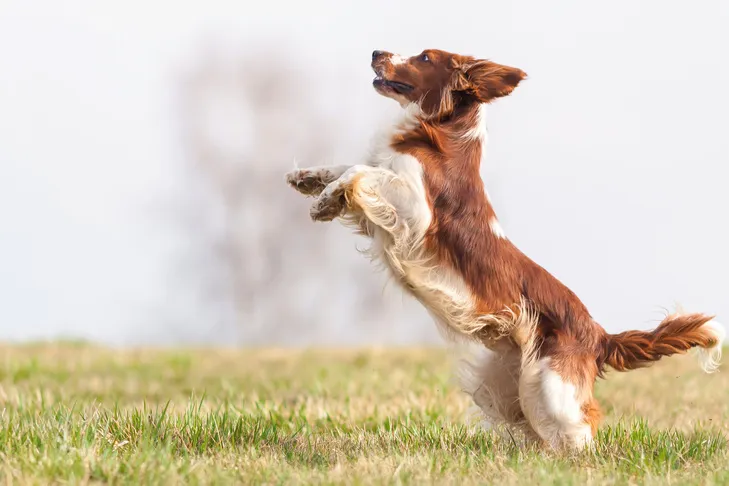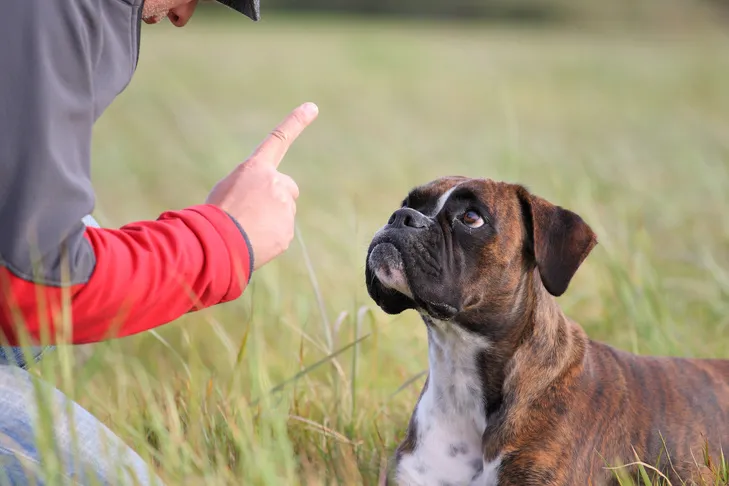Few things are as exciting as being greeted by an enthusiastic puppy. However, when that excitement translates into your puppy jumping on you, it can quickly become frustrating, messy, and even a bit painful. While your furry friend is likely just trying to say “hello” and get your attention face-to-face, this common puppy behavior problem needs to be addressed early to prevent it from becoming a deeply ingrained habit. Learning how to get your puppy to stop jumping on me requires patience, consistency, and teaching them a more polite way to interact. By understanding why your puppy jumps and consistently applying positive reinforcement techniques, you can guide them toward appropriate greeting behaviors, ensuring a safer and more pleasant experience for everyone involved.
Establishing Polite Greetings: The Core Principles
Teaching your puppy to greet politely means showing them what you want them to do, rather than just what not to do. This approach is far more effective and less confusing for your young dog. The goal is to establish a clear greeting rule, such as “four paws on the floor,” or asking them to sit or lie down.
Reward Four Paws on the Floor
The most effective way to address unwanted puppy behavior is to teach an incompatible alternative. Your puppy cannot jump and have all four paws on the floor simultaneously. Therefore, make it a steadfast rule that you only acknowledge and greet your puppy when all their feet are on the ground. This could mean they are standing calmly, sitting, or even lying down. Consistency is key here; if you allow jumping sometimes (e.g., when you’re wearing old clothes) but not others (e.g., when you’re dressed for work), your puppy will become confused and the behavior will be harder to extinguish. Always ensure your puppy adheres to this rule before receiving any attention.
Immediate Positive Reinforcement
Puppies, like all dogs, will repeat behaviors that get them what they want. When your puppy successfully keeps their paws on the floor during a greeting, immediately provide praise and petting. Your attention is a powerful reward, especially for a puppy still learning the ropes. Don’t delay your greeting by doing other tasks like taking off your coat or shoes. The moment your puppy offers the desired behavior, acknowledge it instantly. This quick feedback loop helps your puppy understand that calm greetings are what earn them your affection and engagement.
Remove Attention When Jumping Occurs
Conversely, the only way to stop jumping is to stop rewarding it. If your puppy jumps on you, immediately take away the attention they are seeking. This means calmly turning your back or walking away without a word or even eye contact. Your puppy will quickly learn that jumping achieves the opposite of their intention. As soon as all four paws are back on the floor, turn back and quietly praise and pet them. This consistent “on-off” switch for your attention will teach your puppy that polite behavior earns interaction, while jumping makes you disengage.
 Welsh Springer Spaniel puppy enthusiastically greeting its owner outdoors.
Welsh Springer Spaniel puppy enthusiastically greeting its owner outdoors.
Setting Your Puppy Up for Success
Training a puppy to stop jumping involves more than just reacting to the behavior; it also means actively creating situations where they are likely to succeed and reinforcing those successes.
Proactive Training and Distraction
While ignoring and rewarding is effective, it can be a slow process requiring trial-and-error from your puppy. Speed up learning by proactively setting your puppy up for success. As soon as you enter, anticipate the jump and immediately ask your puppy to “sit” or “stay” before they have a chance to leap. If your rule is “four on the floor,” encourage them to remain standing calmly. Another excellent technique to keep your puppy grounded is to scatter small, high-value treats on the floor as you arrive. Most puppies can’t resist investigating tasty morsels, and they can’t jump while sniffing the ground. Be quick and consistent with this method, providing food rewards before they even think about jumping. Over time, you can gradually phase out the food as the polite greeting becomes a habit.
Consistent Rewards for Good Behavior
Your puppy will learn proper greeting behavior much faster if their actions consistently and immediately impact your attention. This means always rewarding your puppy when their front feet stay on the floor. Never withhold your attention, even if you’re feeling irritated from a previous jumping episode. It’s crucial not to let past frustrations influence your current response. Inconsistent reinforcement will only confuse your puppy and prolong the training process. Every time your puppy chooses the correct behavior, reinforce it.
Avoiding Counterproductive Responses
Some common reactions to a jumping puppy can actually worsen the behavior or damage your bond. It’s important to understand why certain actions should be avoided.
Avoid Physical Reprimands
Remember that your puppy is primarily jumping to get your attention. Even negative physical responses, such as grabbing their paws, holding them down, or pushing them away, still count as attention in your puppy’s eyes, inadvertently rewarding the jump. This can lead to increased jumping frequency in the long run. Furthermore, for many puppies, getting physical can be misinterpreted as an invitation to roughhouse play, causing them to return with even more energetic jumps, believing it’s part of a game. Such interactions can also erode trust and confuse your puppy about what is expected during greetings. If you’re struggling to manage these interactions, consider how to effectively stop my dog from jumping on visitors more broadly, as the principles are similar.
 Playful American Hairless Terrier puppy leaping towards its owner's leg in a park.
Playful American Hairless Terrier puppy leaping towards its owner's leg in a park.
Never Use the Knee-Up Method
A widely circulated but harmful piece of advice is to raise your knee to block your puppy’s chest when they jump. As with other physical interventions, some boisterous puppies might interpret this as an invitation to a wrestling game, thus encouraging more jumping. More concerningly, for most puppies, this action can create distrust and significantly damage the human-canine bond. Your puppy is simply trying to greet you, and responding with what they perceive as punishment can make them wary or fearful of you. This could even lead to other behavioral problems down the line, such as reluctance to come when called or general anxiety. Prioritize building a trusting relationship with your puppy through positive reinforcement.
Managing Excitement and External Interactions
Puppies often struggle with emotional self-control, especially when overly excited. Learning to manage their excitement and preparing for interactions with others is vital for successful training.
Keep Greetings Calm and Low-Key
Because your puppy is incredibly happy to see you, controlling their excitement can be challenging. It requires significant self-control for them to resist the natural urge to jump and instead follow your new greeting rule. Make it easier for your puppy by keeping your own greetings low-key. Dogs are adept at reading our emotions, so if you are boisterous and excited, your puppy will likely mirror that energy. Instead, maintain a calm and quiet demeanor, even when you are praising them. As your puppy starts to grasp the concept, you can gradually increase your enthusiasm until you can match their joy without triggering unwanted jumping.
Prevent Jumping on Guests
Your puppy’s jumping behavior isn’t solely reinforced by you; other family members, guests, and even strangers can inadvertently encourage it. To prevent your puppy from jumping on guests, use proactive management techniques. This might involve keeping your puppy on a leash when visitors arrive, using a baby gate to block access to the front door, or even sending your dog to their place in their mat or crate until they are calm. This ensures they are not in a position to practice the jumping behavior. Implementing these strategies is crucial when learning how to stop your dog jumping on guests.
 Man calmly training a Boxer puppy to lie down in an outdoor setting.
Man calmly training a Boxer puppy to lie down in an outdoor setting.
Educate Guests and Strangers
Don’t hesitate to clearly communicate your puppy’s greeting rules to guests and even polite strangers. While your puppy is still learning, ask people to completely ignore your puppy unless you give the green light. It’s often best to avoid interactions with strangers until your puppy has reliably mastered calm greetings with friends and family who will cooperate with your training. If an unavoidable encounter arises, use a “watch me” cue or distract your puppy with a hand touch or a favorite toy until the person has passed. For further guidance on these scenarios, refer to resources on how to stop a dog from jumping up on strangers and when to use a leash on puppy.
Conclusion
Teaching your puppy not to jump on you is a journey that requires consistency, understanding, and positive reinforcement. By diligently applying the principles of rewarding polite greetings, removing attention for jumping, and proactively setting your puppy up for success, you can guide them to become a well-mannered companion. Avoid physical reprimands and methods that can harm your bond, and remember that calm, low-key interactions are key to managing their excitement. With patience, every puppy can learn to greet you and others politely, making every reunion a joyful, four-paws-on-the-floor experience. For more expert advice on puppy training and behavior, continue exploring Dog Care Story’s comprehensive guides.
